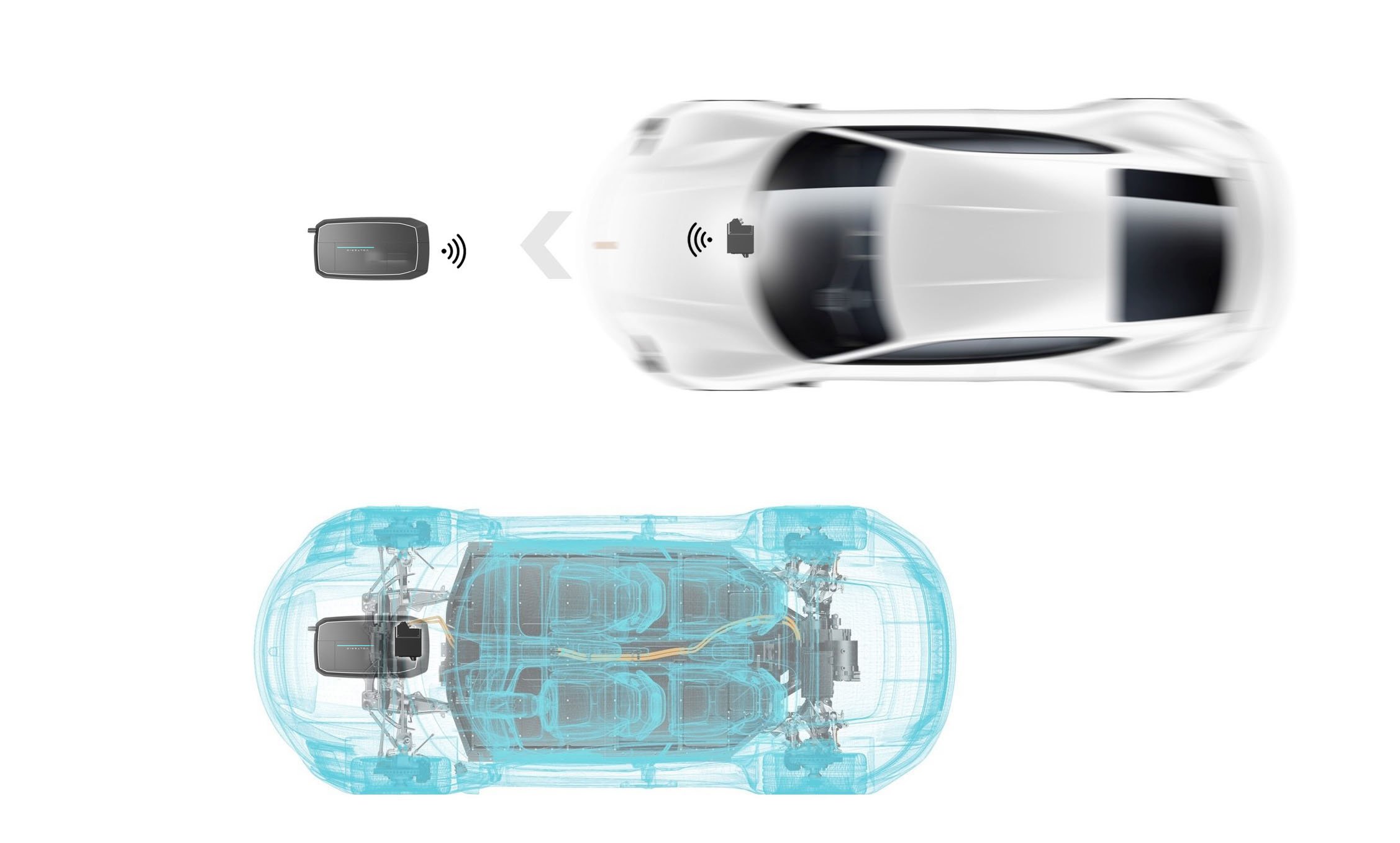
As early as 2013 it was clear to Christian Flechl: e-mobility is the future. But what bothered him though, were the inconvenient charging systems. At a time when everything was becoming wireless, it seemed that the endless fuss with the charging station cables no longer seemed to keep up with the times. In collaboration with car manufacturers, he developed an automated universal charging system for all types of cars.
In comparison to other technologies, Volterio uses a new type of contact system. It automatically connects the basic module to the vehicle unit by means of a robotic arm, which is located underneath the electric vehicle. The charging module is anchored in the parking garage floor. Since the charging system is conductive, it makes a direct connection between the floor module and the vehicle unit.
In een interview met Innovation Origins Christian Flechl explains in an interview with Innovation Origins how his charging system works and how Volterio is going to proceed.

How did Volterio get its start?
The idea first came up during my studies at TU Graz. There I was working on the grid integration for e-mobility and the effects on the low-voltage grid. It doesn’t really have anything to do with automated charging. But even back then, in 2013, it became clear that e-mobility is the future. Biofuels and hydrogen had no economic or ecological significance. The charging plug was standardized throughout the EU in the same year.
At that time, large companies were already working intensively on an induction charging system that only had one charging circuit. It was claimed that the product was ready for series production. But I had my doubts. The charging capacity was low and the electric car had to be placed directly above the circuit. On top of that, a strong electromagnetic field formed during the charging process. This is dangerous if there is, for example, a cat or a metal object between the base station and that charging area. Another problem was that the device required quite a bit of space. In fact, that inductive charging system is still inefficient. BMW is the only manufacturer using it. And just for their 530e model. Besides, there is also no standardization.
How did you resolve this problem?
The plug you use for charging is designed for people, not robots. If you want to plug it in, you have to make several movements. You have to tilt and rotate the plug to get it in the right position. This is a complex operation for a robot. Also, this type of plug with pins is not suitable for automated connections. That is why our connector has no pins and can center itself. Our charging system mimics the standardized connector in functional terms – but it incorporates a new geometry.

How were you able to carry out this idea?
Back in 2015, I had already applied for the two most important patents. About a year after the company was founded, a leading car manufacturer approached us. Now there are ten car manufacturers working with us. They all have the same goal: to provide a relatively simple charging system that doesn’t take up too much space in a car. We have to start from the smallest available space in order to make the vehicle unit suitable for different types of vehicles.
Our charging system is compact and economical. We want it to become the global standard in e-mobility. Collectively, we know how to conduct research in this area. We are by far the world leader when it comes to technology. As a start-up company acting on our own, this would have been impossible.
It sounds as if it’s very simple?
The decisive factor was finding a car manufacturer who believes in this solution and who wanted to further develop this technology in collaboration with us. We never tried to contact them ourselves. All of the automobile manufacturers approached us. This led to a major alliance which is supporting us. The timing was crucial as well. Three years earlier, the idea would never have made it. Three years later, it would have been too late. This can also be seen in the current standardization processes.
How difficult was it to secure funding?
So far we haven’t needed an investor and we’re financing ourselves mainly from actual sales of pilot systems. We have already achieved a six-figure turnover a year since the company was set up. Right now we’re working with some of the leading automobile manufacturers in Europe, America and Asia.

What is going to happen next?
The whole process of standardization is still ongoing. But more and more are being set, so there should be a worldwide standard within two to three years. Then it will be a matter of scaling up. Consequently, it won’t be long before our charging system will be used at various automobile manufacturers.
As a start-up, it was impossible for us to finance the industrialization of the system ourselves. That’s why we are also licensing out the technology. To do this, we work together with original equipment manufacturers (OEM) and their suppliers. Volterio’s added value is that it is made up of several patents that are difficult to bypass.
Our current solution is designed for use in garages and in places where you can easily install equipment. Although we are only a few months away from presenting the second version, which is aimed at use in public spaces and can be completely tucked away underground. Ultimately, the ideal charging station is invisible.
You can read more articles about start-ups here.
Other IO articles on charging systems can be found here.

The picture shows the size of the charging system and its location on the car.
